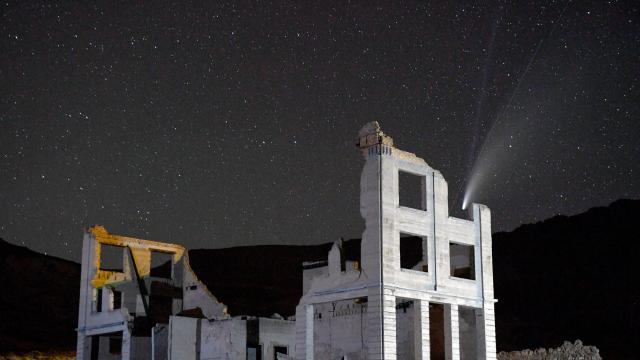No longer happy to just be forming a conga line across the night sky, SpaceX’s Starlink satellites are now ruining astronomers’ views by racing side by side through low Earth orbit.
This photo was taken by astrophotographer Daniel López, which is, safe to say, one of the more badass jobs around. The picture was posted by equally badass astronomer Julien Giard from the Space Telescope Science Institute.
17 30-second images of the comet added up by @cielodecanarias, completely photobombed by @elonmusk‘s #Starlink satellites. It’s a few hundreds of them right now,there will be a few thousands in the near future. @SpaceX is committed to coating orienting them better but still…. pic.twitter.com/TYtTf5xwhc
— Julien Girard (@djulik) July 22, 2020
What López was trying to capture was Comet NEOWISE, which is approaching its closest point to the Earth, also known as its perigee, and will arrive at that moment 64.3 million miles from Earth at 9:09 EST on July 23, according to Space.com. The image is actually seventeen long-exposure images layer on top of one another to show just how many of these little Starlink devils are racing around the Earth at that moment.
What started as a network of 60 satellites a little over a year ago is now 538 units strong, according to TechCrunch. Their purpose, someday, will be to provide high-speed internet to everyone on the planet. The company says it needs to get to least 800 satellites to be operational, but plan on at least 12,000.
That’s a problem, considering the low-orbit objects are already causing a lot of headaches for the star-gazing set. Girard’s own photographs have been bombed by the StarLink satellites as well, and many responding to his original tweet with their own images. The problem is getting so worrisome NASA started an open-source project last month to gather more information on the increasingly streaky skies. SpaceX, for its part, is experimenting with sun visors that would keep the unusually bright objects from distracting researchers and hobbyists alike, though the visors are only to deployed on 58 of the over 500 currently in orbit.
The StarLink satellites aren’t the only piece of SpaceX tech to get a chance to mug with Comet NEOWISE. SpaceX’s own Twitter account posted this image of the comet streaking across the sky three days ago above a Falcon 9 on its launch pad.
Comet NEOWISE over Falcon 9 and ANASIS-II vertical on SLC-40. Today’s launch window opens at 5:00 p.m. EDT and closes at 8:55 p.m. EDT, and weather is looking 70% favorable → https://t.co/bJFjLCzWdK pic.twitter.com/5ITydgvQVI
— SpaceX (@SpaceX) July 20, 2020
You should be able to see the comet without a telescope or binoculars tonight, but it will start to dim as it starts to make its way back out into the solar system. Unfortunately, if you miss Comet NEOWISE this time around, you’re probably not going to catch it on its return trip. Next time NEOWISE shows up, 6,800 years will have come and gone, according to NASA.
